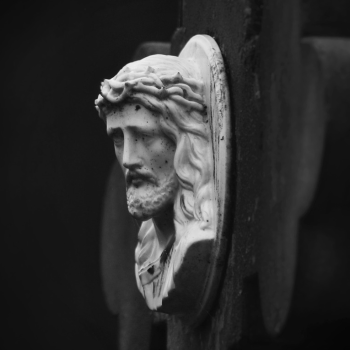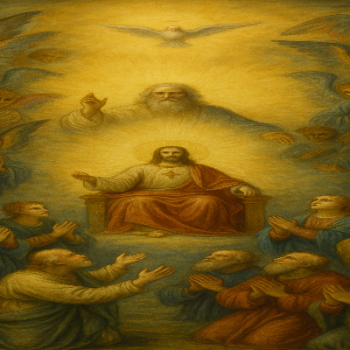
Within the Catholic Church, there are some two-thousand-five hundred religious orders. The existence of these religious orders dates back to the early Church and can now be found throughout the globe.
In this paper, I will give a basic overview of the orders with Catholicism and how these orders are created. First, however, I will endeavor to explain what exactly a Catholic religious order is.
Within the Catholic Church, a religious order is generally defined as an organization of persons, either men or women, who abide by a specific rule(s) that is unique to that order. In addition to the particular Rule(s), the order will profess the three evangelical vows of poverty, chastity, and obedience. Lastly, the members of the order are to be obedient to a superior.
Members of religious orders were called “regulars,” an English translation of the Latin “regula” (Rule), owing to the fact that members adhered to a particular rule. The various religious orders within the Catholic Church and their different ways of life reflect their founders’ specific recommendations and methods. Religious orders generally follow one of the four great religious rules: the Rule of St. Basil, the Rule of Saint Benedict, the Rule of Saint Augustine, and the Rule of Saint Francis.
To speak of a religious rule, one must keep in mind that these are not single commands that each member has to follow. Rather, a rule will be comprehensive, including when members are to eat, when they are to pray, and when they are to work. Additionally, each order will have aspects that they emphasize.
The Rule of Saint Basil emphasizes poverty, obedience, renunciation, and self-abnegation. The Rule of Saint Benedict is a seventy-three-chapter document that treats the duties of the abbot (the superior in the monastery), how God is to be worshipped, how monks are to be disciplined, and various other regulations involving the administration of the monastery. The Rule of Saint Augustine contains eight chapters dictating such matters as the purpose and basis of communal life, prayer, moderation and self-denial, safeguarding chastity, and fraternal correction, the care of community goods and treatment of the sick, asking pardon and forgiving offenses, and governance and obedience. Finally, the Rule of Saint Francis is composed of twelve rules. These rules cover how its members are to live (they are to own no property), how much each member is to pray (the Lord’s Prayer is recited twenty-four times at morning prayer), and when they are to fast (forty days prior to Christmas).
It is possible to identify four categories of religious order within Catholicism. They are Mendicant orders, Monastic orders, Clerks Regulars, and Canons Regulars.
The Mendicant (translated as those who beg) order is usually composed of friars or nuns. From the Latin frater through French frère, Friars is translated as “brother.” Friars are ordained priests who are committed to a particular religious order.
Monastic orders are usually composed of monks or nuns (cloistered) who live and work in a monastery. Monks are members of a community of men, leading a more or less contemplative life apart from the world. In addition to adhering to the vows of poverty, chastity, and obedience, monks must abide by the Rule unique to their particular religious order.
Canons Regulars are those orders founded by canons and canonesses regular who recite the divine office and generally are in charge of a parish.
Finally, Clerks Regulars are orders founded by priests who are also religious men with vows and have a very active apostolic life.
Having thus far explored what is meant by a Catholic religious order, the multifarious rules that govern the various orders, as well as having touched upon the four categories into which the orders are generally placed, I turn to discuss how a religious order is created.
In a real sense, the development of religious orders evolves from apostolic succession. In the first two centuries following the Ascension of Christ, the Church saw the growth of something resembling religious orders. The orders of this time were disciples of Jesus Christ who sought to devote themselves more fully to the new Christian faith. For example, we find in the writings of Saint Paul references to widows and virgins who helped build up the early Church. These women were the first forms of religious life—what would later become religious orders—within the Church.
In the decades and centuries that followed, the various orders grew. By the third century, we read about the “desert fathers,” hermits who spent their days in prayer in the desert, sometimes gathering a following of others around them.
In recent years, the Catholic Church has taken a much more proactive role in creating and developing religious orders. Evidence of this is found in Pope Francis issuing a decree requiring bishops to obtain written permission from the Vatican to start an “association of the faithful,” which is the initial step in creating a religious order. The decree, issued in 2022, states that “Before the diocesan bishop erects — by decree — a public association of the faithful with a view to becoming an institute of consecrated life or society of apostolic life of diocesan right, he must obtain a written license from the Dicastery for Institutes of Consecrated Life and Societies of Apostolic Life.”
While the Catholic Church is one, it is not monolithic. As evidence of the diversity that composes the mystical body of Christ is the several religious orders that, in different ways, work toward bringing forth the Kingdom of God.













